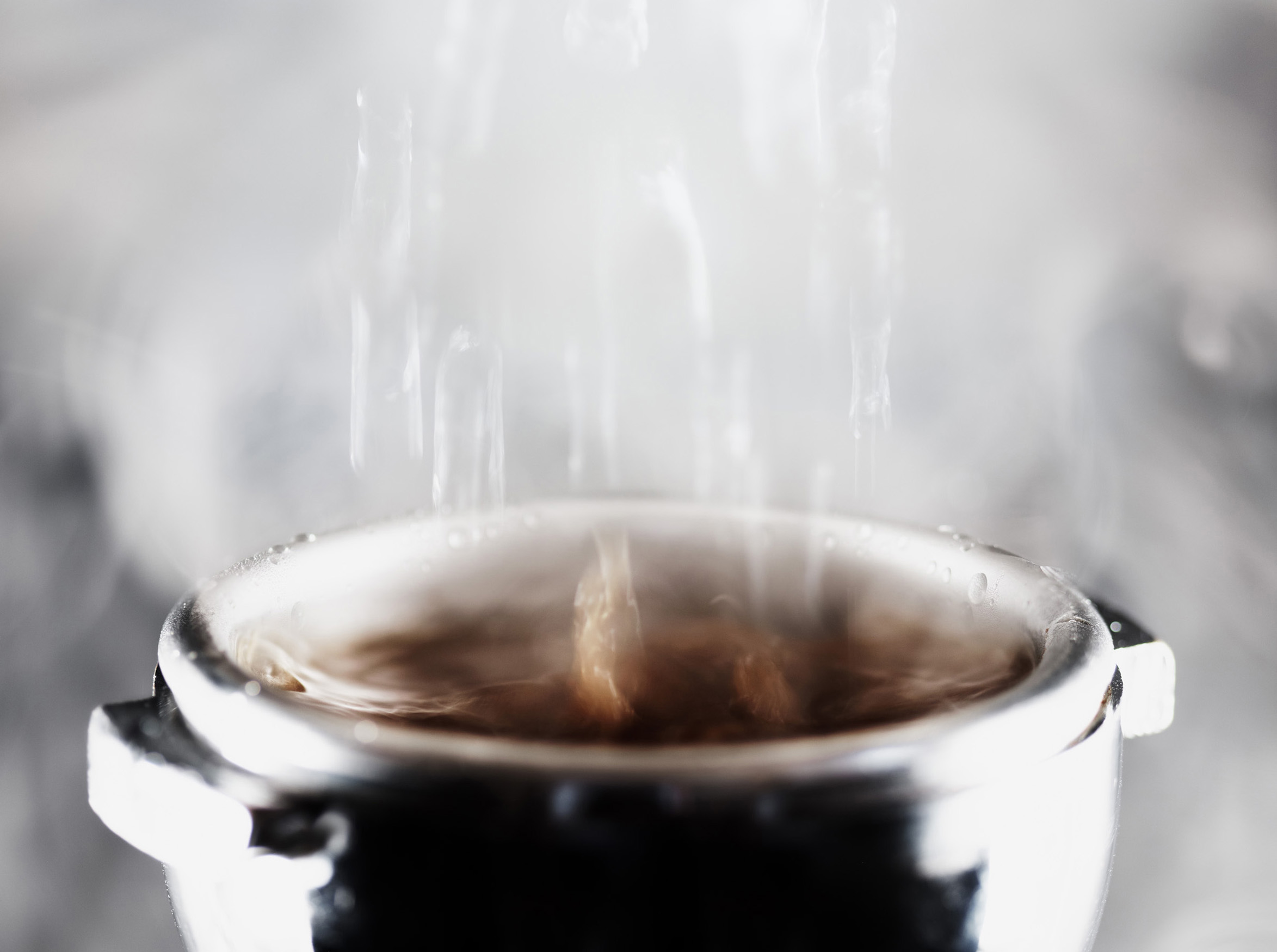So far in this chapter, we’ve been talking about pressure as a fixed variable. Some machines have the ability to alter pressure during a shot, which can have benefits to extraction and flavour. At its simplest, this involves a period of lower-pressure brewing at the start of the shot, known as preinfusion.
Preinfusion gives the puck time to absorb water before experiencing full brewing pressure. This helps the puck become evenly wetted, which makes extraction more uniform. Dry coffee is hydrophobic, so any dry spots that remain when brewing pressure kicks in will resist the flow of water, creating uneven extraction and channels. Preinfusion gets rid of dry spots, leading to more even extraction. This also seems to reduce the variability in extraction between shots, as shown, for example, in this experiment by Compound Coffee.
Wetting the coffee also makes the puck more permeable (G Caprioli et al, 2015), which leads to one of the major benefits of preinfusion — it allows you to grind finer. Since a wetted puck is more permeable, the flow rate during brewing is faster after a preinfusion. This increase in flow rate means you can grind finer and still achieve a reasonable shot time, which makes it possible to achieve higher extractions (S Rao, 2016).
Preinfusion is most effective if the puck can become completely saturated, to the point where liquid begins to be visible at the bottom of the basket. How long this takes depends on grind size and flow rate, but it can be 8–10 seconds or more — which is longer than most machines allow for the preinfusion step.
Espresso machines create a preinfusion step in different ways. One way is to open the solenoid without turning the pump on for the first few seconds of the shot. The incoming pressure during the preinfusion stage is thus the same as line pressure from the water supply. Other machines may keep the pressure constant but divert the flow through a narrow flow restrictor or partially close a needle valve,


